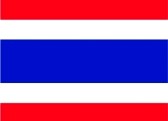All Categories
*Price and Stocks may change without prior notice
*Packaging of actual item may differ from photo shown
- Electrical items MAY be 110 volts.
- 7 Day Return Policy
- All products are genuine and original








About The Sandino Affair
Product Description This is a reprint of the 1985 Duke University Press edition of The Sandino Affair, the classic account of the struggle of native General Augusto C. Sandino against the United States Marine Corps in the mountains and jungles of Nicaragua from 1927 to 1933. A proud Hispanic and a master of guerrilla tactics, Sandino was the spiritual father of a generation of Latin American revolutionary warriors, including Fidel Castro, Che Guevara, and the Sandinistas of contemporary Nicaragua. Review Few have better credentials as an expert on Latin American guerrillas than author Macaulay who, after fighting as one under Castro, turned to studying them as a historian. He has put his expertise to good account in this volume. Sandino won the war against US intervention (1928-1933) although he lost many engagements and his casualty rate was several times that of the enemy.... The principal innovation of the war was the US Marines' use of airplanes for tactical support: the first recorded dive-bombing in history took place in Nicaragua in 1927.... The book is well balanced and well written. -- American Historical Review, May 1968 In a classic monograph, scrupulously researched and stylishly written, the author sketches the backdrop of Nicaragua, brings American troops to the foreground, and then places his nationalist guerrilla leader in this context. When originally written nearly two decades ago this work was hailed as a parable that could illuminate United States policy in Vietnam. Today the lessons to be learned fall much closer to home.... This work has been and will continue to be influential. -- Latin America in Books, January 1986 Macaulay describes in great detail Sandino's military tactics and battles, the role an underdeveloped infrastructure and geography played in the warfare, and the American military, Nicaraguan and other Central American personalities involved in the action.... The book is fast- paced and well-written. It ought to be in all public and school libraries.... Whether one agrees or disagrees with the contemporary Sandinistas, this book helps one understand them. -- The Reprint Bulletin, January 1987 Macaulay's prose flows smoothly, guiding the reader through the intricacies of the various engagements and the complications of jungle movements of small bodies of troops. The limited scale of the operations is soon forgotten, for the author skillfully integrates the various campaigns and places them in the context of the overall confrontation between the guerrillas and the Marines. Descriptive passages convey the nature of the terrain, giving the reader a feeling of involvement. The study is well grounded in the primary sources, and is clearly military history at its best. -- Caribbean Studies, January 1969 Neill Macaulay's The Sandino Affair is woven around the subject of guerrilla warfare. Its focus is Nicaragua specifically; Central America in general. It embraces a somewhat glorified biography of Sandino and what in part appears to be a biased account of U.S. involvement in Nicaragua, 1927-1933. The author, Macaulay, speaks of the "imperialist aims" of the United States and fails to give due credit to the peacekeeping role of the Marines and their contribution to bringing a civil war to an end.... Macaulay recounts how Somoza arranged the steps by which a squad of Guardia, essentially a firing squad, ended Gen Sandino's colorful and "radical ambitious" career. Macaulay here displays his prejudice. He states that although the United States was not directly involved in the assassination of Sandino, it is generally believed that the crime was instigated by "Yankee Imperialists." -- Marine Corps Gazette, November 1986 Neill Macaulay's account of the bizarre war between U.S. marines and Nicaraguan rebel chief Augusto C. Sandino reads curiously like today's newspapers. From 1927 to 1933, Sandino's guerrillas practiced hit-and-run tactics against the superior American occupying force, dragging



























